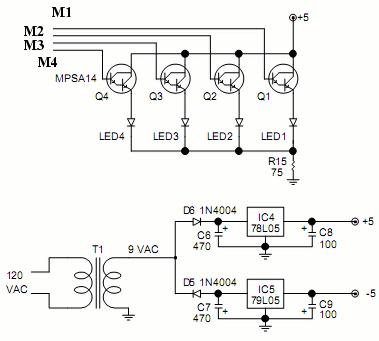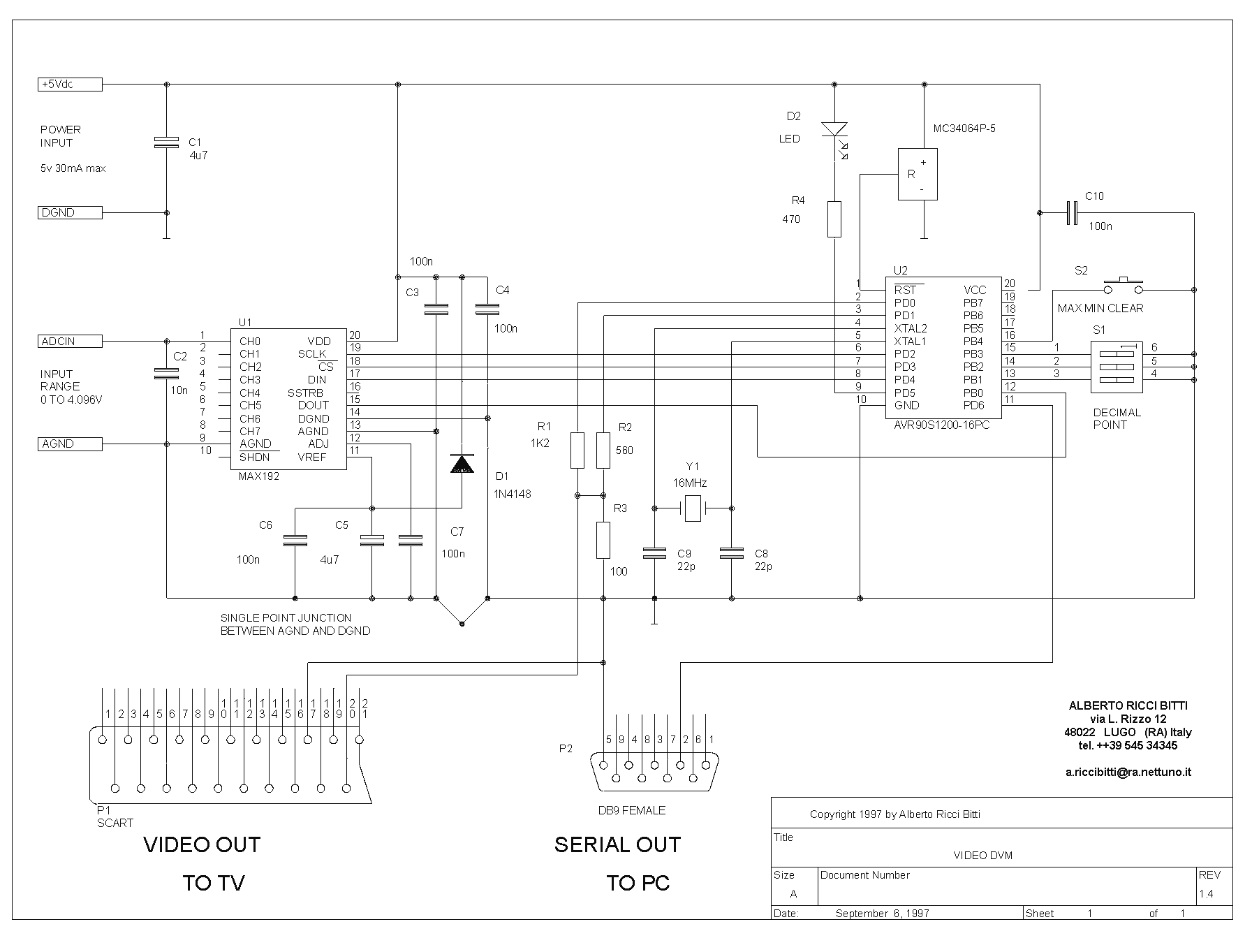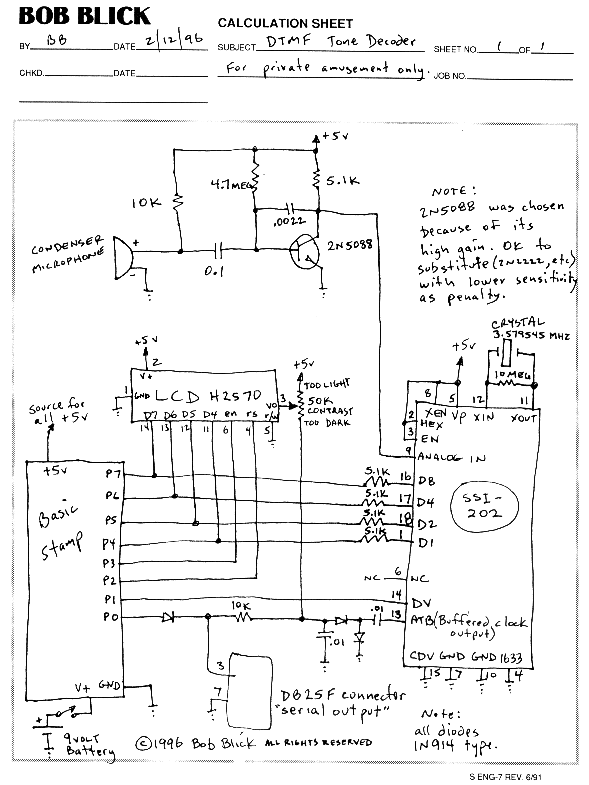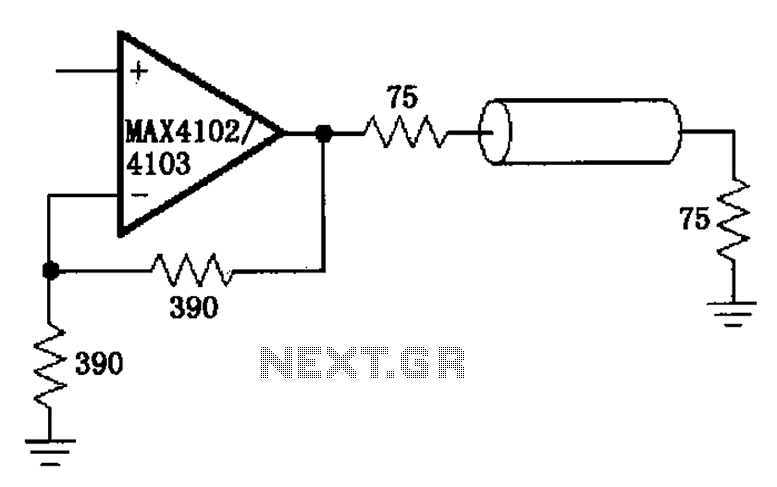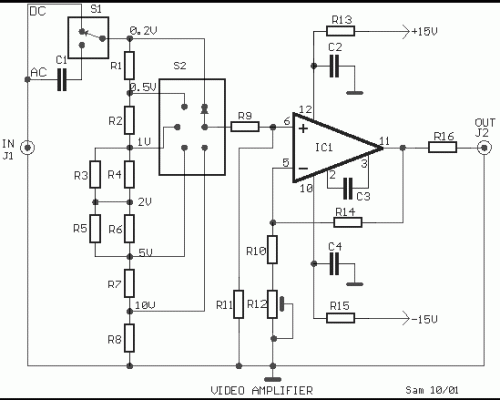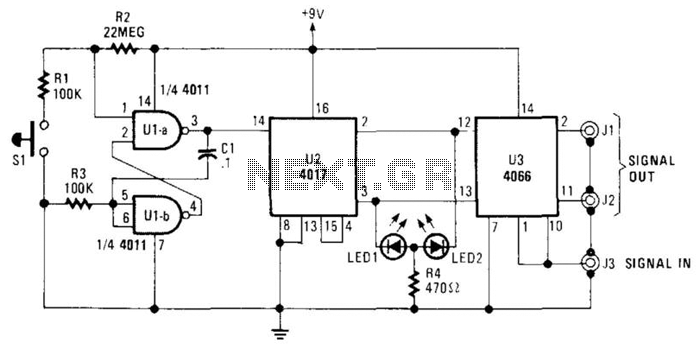
Ntsc/Rgb Video Decoder

An NTSC/RGB decoder is presented here. Utilizing a TDA3330, a 1-V input video signal is decomposed into its red (R), green (G), and blue (B) components, along with composite sync. U1 serves as an integrated sync separator (LM1881). This circuit is designed to facilitate the connection of RGB monitors to NTSC video systems.
The NTSC/RGB decoder circuit employs the TDA3330 integrated circuit, which is specifically designed for decoding NTSC video signals. The TDA3330 processes a 1-V peak-to-peak input video signal, effectively separating it into its individual color components: red, green, and blue. This separation is critical for applications involving RGB monitors, which require distinct color signals for accurate display.
The integrated sync separator, represented by U1 (LM1881), plays a vital role in this circuit by extracting the synchronization signals from the composite video input. The LM1881 is capable of detecting the sync pulses embedded within the video signal and providing a clean, separated sync output. This output is essential for ensuring that the RGB monitor can synchronize its display with the incoming video signal, thus preventing issues such as image tearing or misalignment.
To implement this circuit, the TDA3330 requires appropriate power supply connections and input/output configurations. The input video signal is fed into the TDA3330, which processes the signal and outputs the separated R, G, and B signals, as well as the sync signal from the LM1881. Proper filtering and decoupling capacitors should be used to minimize noise and ensure stable operation.
This NTSC/RGB decoder circuit is particularly beneficial in applications where RGB monitors need to interface with standard NTSC video sources, such as VCRs, cameras, or broadcast television signals. By utilizing this decoder, users can achieve high-quality color reproduction on RGB monitors, enhancing the viewing experience. An NTSC/RGB decoder is shown here. Using a TDA3330, 1-V input video is broken down into its R, G, components, and c omposite synch. U1 is an integrated synch separator (LM1881). This circuit should be useful for interfacing RGB monitors to NTSC video systems. 🔗 External reference
The NTSC/RGB decoder circuit employs the TDA3330 integrated circuit, which is specifically designed for decoding NTSC video signals. The TDA3330 processes a 1-V peak-to-peak input video signal, effectively separating it into its individual color components: red, green, and blue. This separation is critical for applications involving RGB monitors, which require distinct color signals for accurate display.
The integrated sync separator, represented by U1 (LM1881), plays a vital role in this circuit by extracting the synchronization signals from the composite video input. The LM1881 is capable of detecting the sync pulses embedded within the video signal and providing a clean, separated sync output. This output is essential for ensuring that the RGB monitor can synchronize its display with the incoming video signal, thus preventing issues such as image tearing or misalignment.
To implement this circuit, the TDA3330 requires appropriate power supply connections and input/output configurations. The input video signal is fed into the TDA3330, which processes the signal and outputs the separated R, G, and B signals, as well as the sync signal from the LM1881. Proper filtering and decoupling capacitors should be used to minimize noise and ensure stable operation.
This NTSC/RGB decoder circuit is particularly beneficial in applications where RGB monitors need to interface with standard NTSC video sources, such as VCRs, cameras, or broadcast television signals. By utilizing this decoder, users can achieve high-quality color reproduction on RGB monitors, enhancing the viewing experience. An NTSC/RGB decoder is shown here. Using a TDA3330, 1-V input video is broken down into its R, G, components, and c omposite synch. U1 is an integrated synch separator (LM1881). This circuit should be useful for interfacing RGB monitors to NTSC video systems. 🔗 External reference
